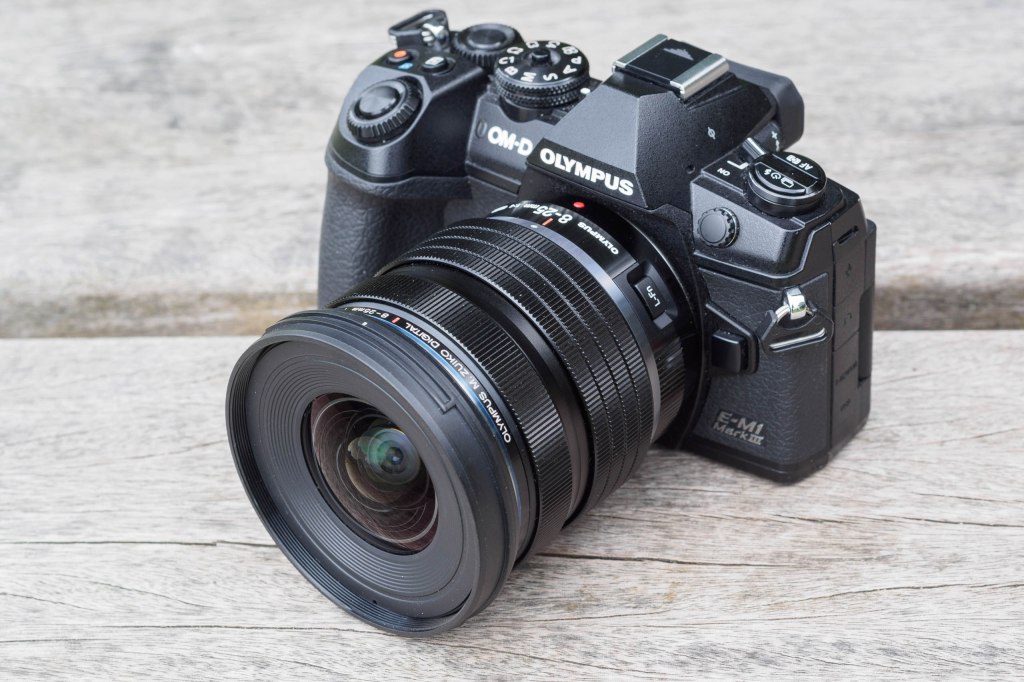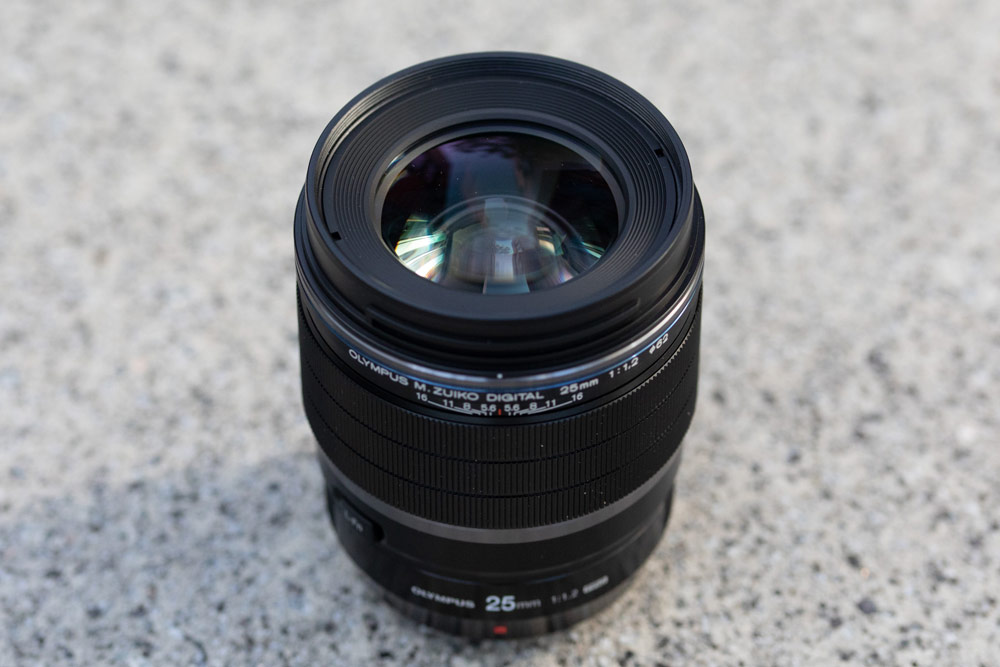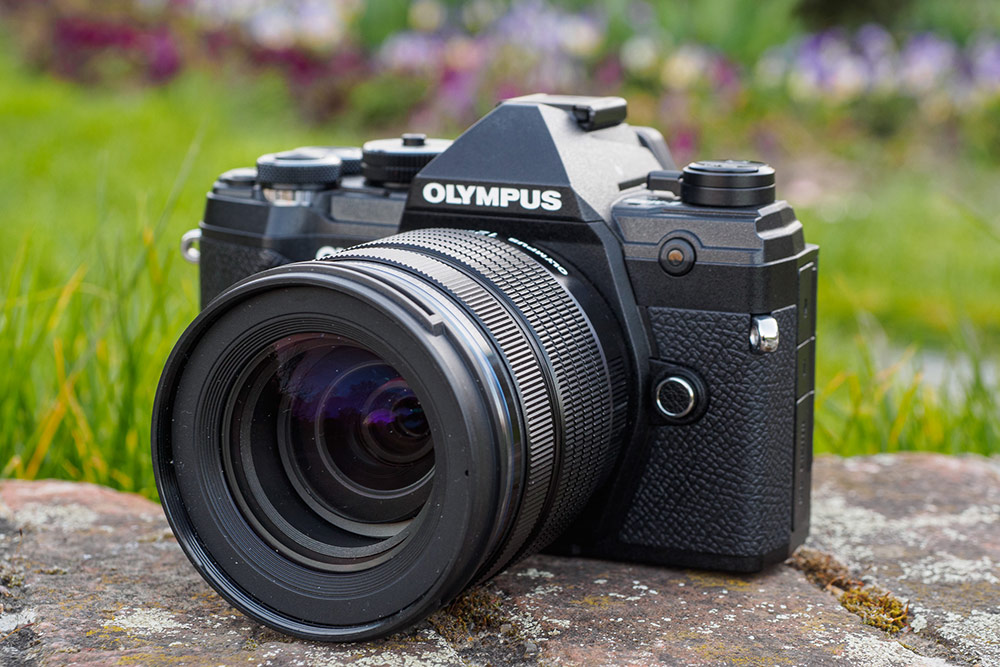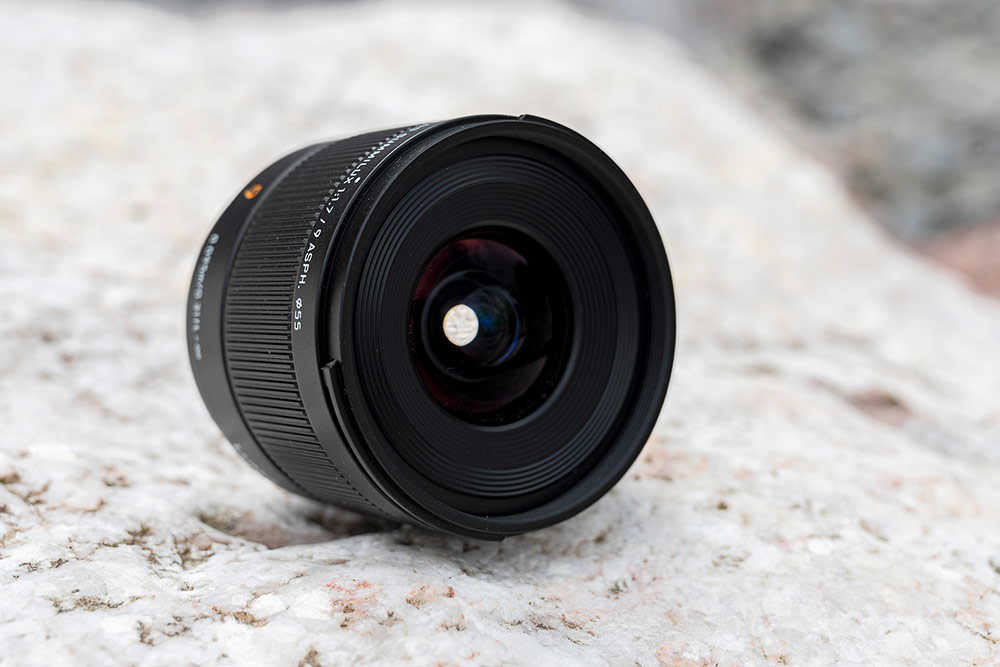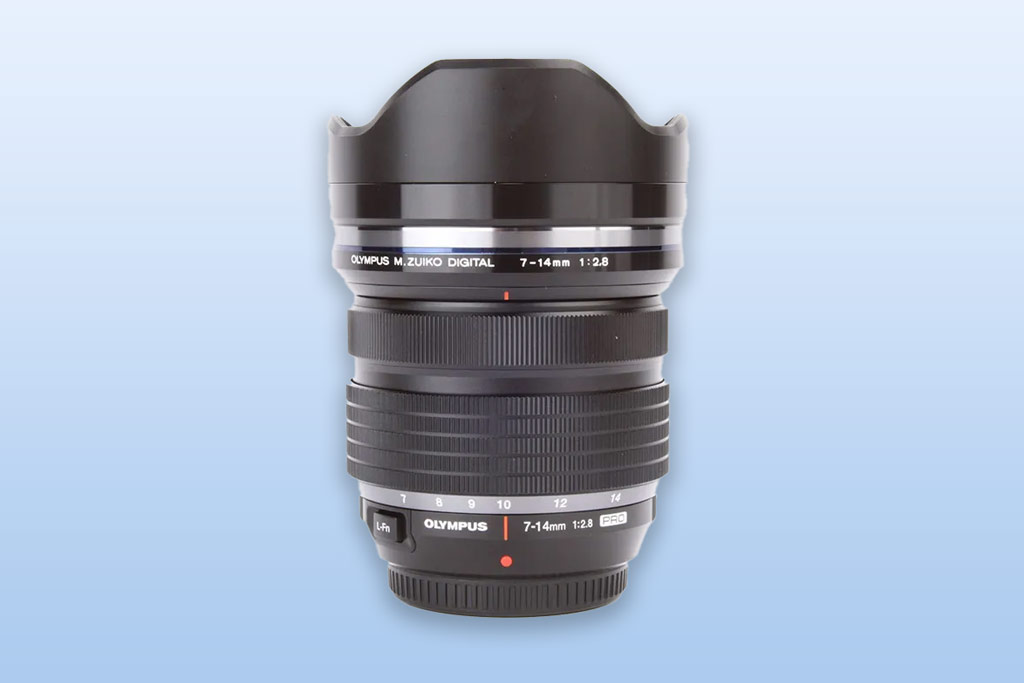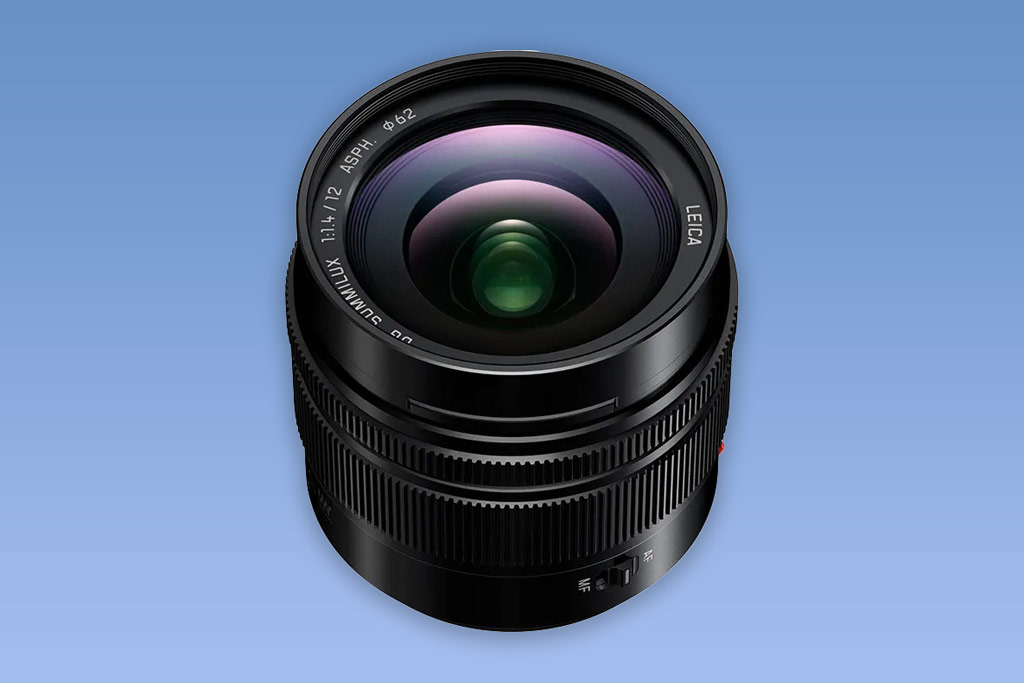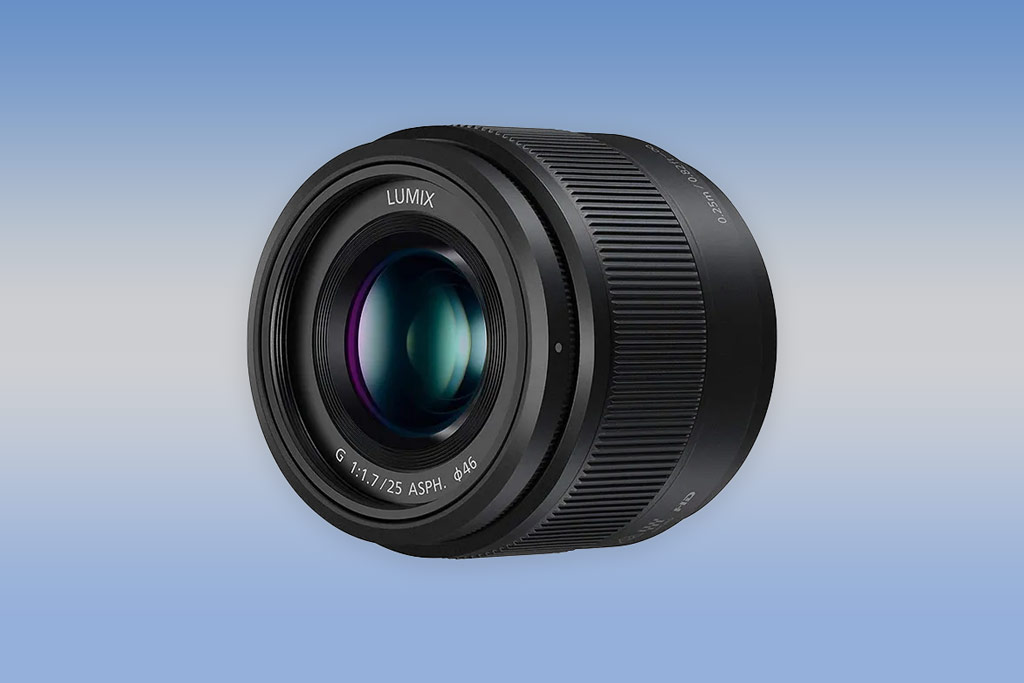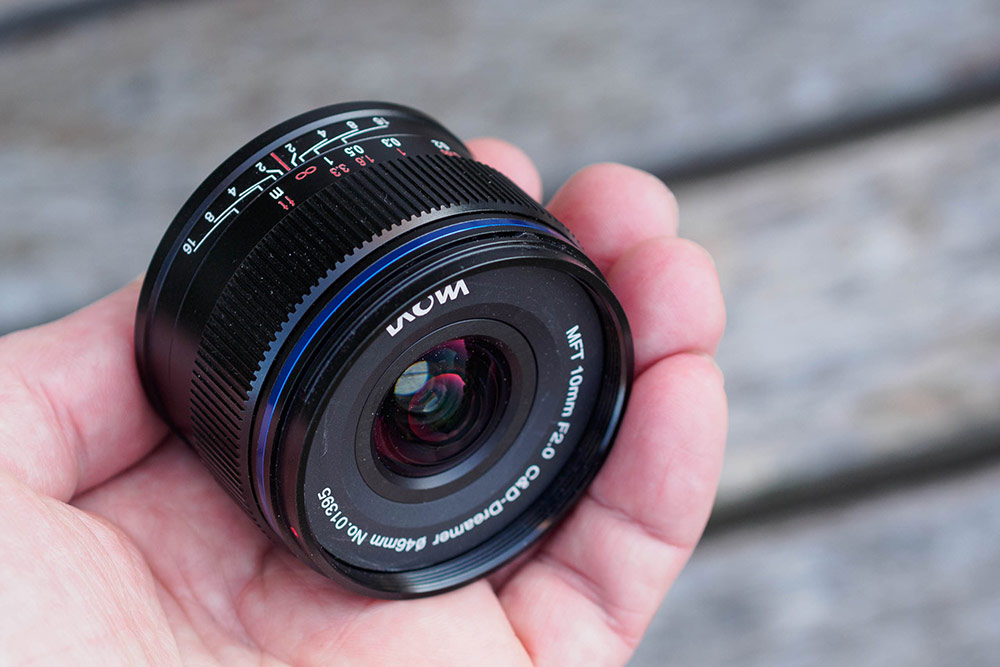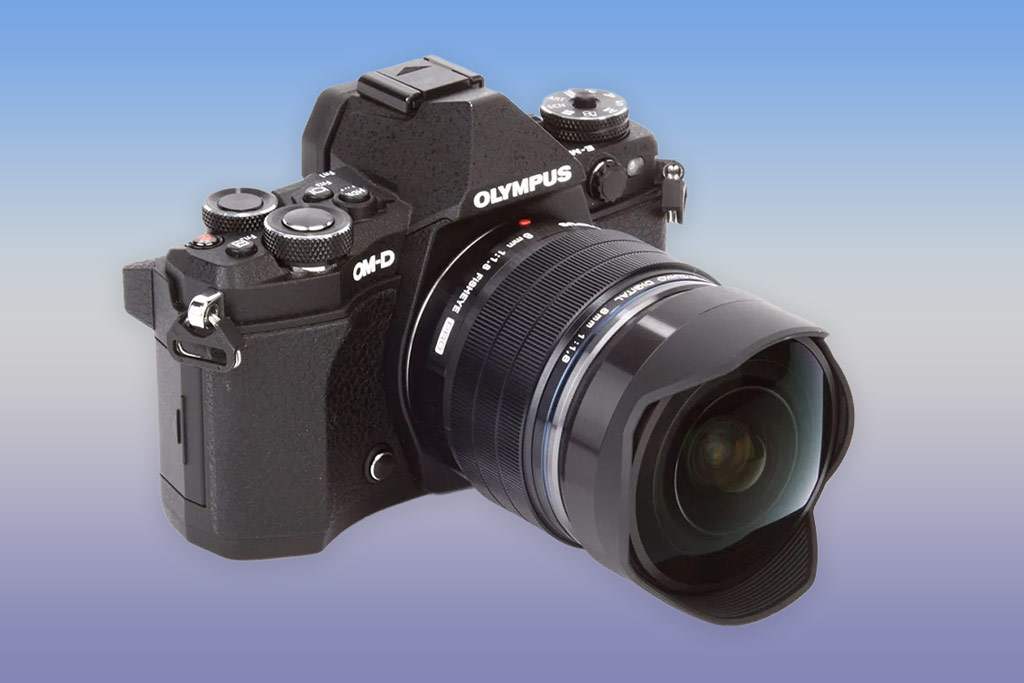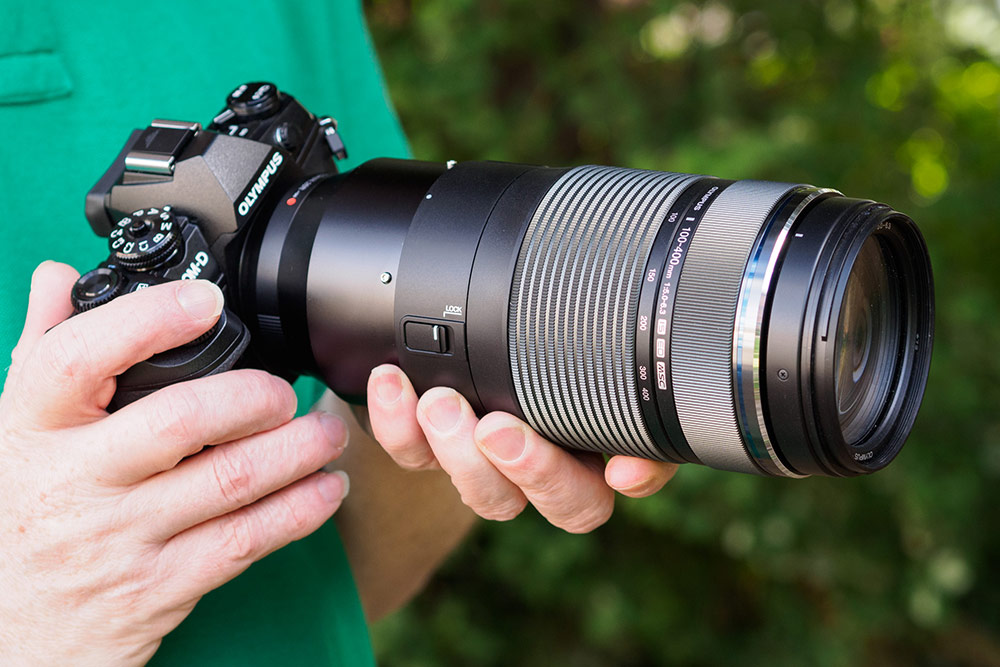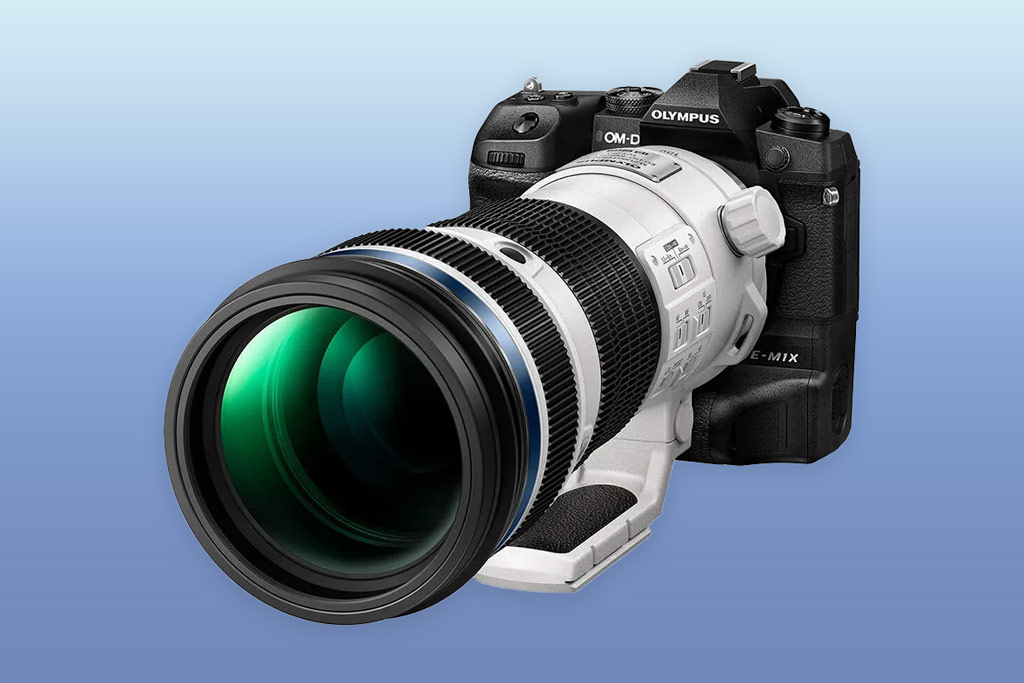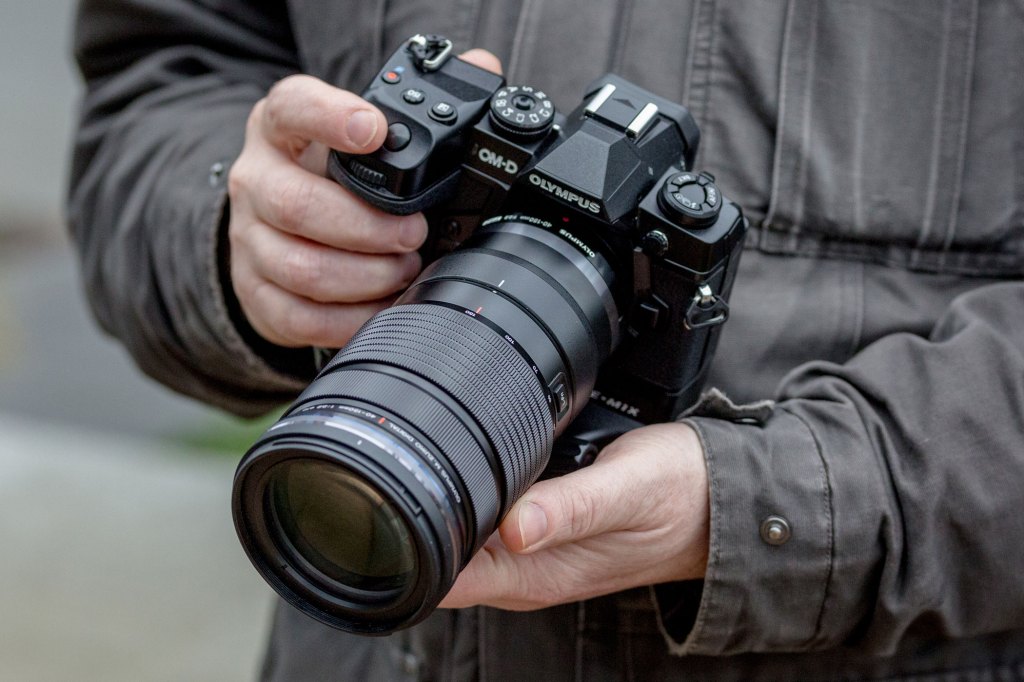Those looking for the best Micro Four Thirds lenses have an incredible range to choose from. The oldest mirrorless system still running, Micro Four Thirds (MFT) is built on an alliance between Panasonic and OM System (formerly Olympus). The two firms produce lightweight cameras and lenses using the same lens mount, meaning that Panasonic Lumix G lenses are adapted for use on Olympus or OM System cameras, and vice versa. This gives us unprecedented freedom in crafting a setup for one of the best Olympus/OM Systems cameras you can buy.
Our guide contains plenty of lenses from the best Panasonic lenses and the best Olympus / OM System lenses, as well as third-party options from the likes of Laowa and Sigma, so that you have a list of lenses that will fit your Micro Four Thirds camera.
The recent release of the Lumix G9 II from Panasonic re-affirms their commitment to keep the MFT format going alongside its full-frame Lumix S cameras; bringing phase-detection autofocus to the Lumix G series among other improvements.
If you’re still shopping for your MFT camera then take a look at our guides to the best Panasonic cameras (just the Lumix G models) and the best Olympus /OM-System cameras. Once you’ve got your camera, it’s time to pick lenses! With so many available for MFT, we’ve restricted this guide to those we’ve reviewed and rated highly – this way, we’re recommending only lenses we know are worth their price tag.
We’ve divided the guide into sections, with lenses that earned five stars from our review team first, then 4.5-star lenses, then the four-stars. Lastly, we’ve included a couple of lenses we haven’t scored, but have taken out on field tests, so you can read our full impressions.
For more on how to choose an MFT lens, there is a quick explainer section of key specs at the bottom of this page, with answers to frequently asked questions about the system.
For more great shooting options, check out our list of the best camera phones – but now for these lovely lenses:
Best Micro Four Thirds lenses – quick list
Looking for the best deal on micro four thirds lenses? Not only will you find the best lenses for micro four thirds cameras , but also some of the Canon EF lens deals, as our ‘Buy now’ buttons are set up to automatically take you to the best prices from trusted retailers. You’ll also find a list of other retailers below each lens, so you can find the right deal for you.
5-star lenses:
- Best ultra-wide zoom: Olympus M.Zuiko ED 8-25mm f/4 PRO – buy now
- Best macro lens: OM System 90mm F3.5 Macro IS PRO – buy now
- Best portrait lens: Leica DG Nocticron 42.5mm f/1.2 ASPH OIS – buy now
- Best Olympus portrait lens: Olympus M.Zuiko 25mm F1.2 PRO – buy now
- Best standard zoom lens: Olympus M.Zuiko 12-45mm f/4 PRO – buy now
- Best super-zoom: Olympus M.Zuiko ED 12-100mm f/4 IS Pro – buy now
4.5-star lenses:
- Best standard prime: Panasonic Lumix G 20mm f1.7 II ASPH – buy now
- Best ultra-wide prime: Leica DG Summilux 9mm f/1.7 ASPH – buy now
- Best OM-System prime: OM-System 20mm f/1.4 PRO – buy now
- Best lens for astrophotography: Olympus 7-14mm f2.8 PRO – buy now
- Best compact telephoto: OM System 40-150mm F4.0 PRO – buy now
- Best Sigma portrait lens: Sigma 56mm f/1.4 DC DN – buy now
- Best premium wide-angle: Leica DG Summilux 12mm f/1.4 – buy now
- Best budget portrait lens: Panasonic Lumix G 25mm f/1.7 – buy now
- Best compact wide-angle: Laowa MFT 10mm F2.0 C&D – buy now
4-star lenses:
- Sigma 30mm f/1.4 DC DN – buy now
- Laowa 7.5mm f/2 MFT – buy now
- Olympus M.Zuiko Digital ED 8mm f/1.8 Fisheye PRO – buy now
- OM System M.Zuiko Digital ED 100-400mm f/5-6.3 IS – buy now
- Panasonic Lumix G Vario 12-60mm f/3.5-5.6 ASPH Power OIS – buy now
- Olympus M.Zuiko Digital ED 12-200mm f/3.5-6.3 – buy now
More Micro Four Thirds lenses to consider:
- Olympus M.Zuiko Digital ED 150-400mm f/4.5 TC1.25x IS PRO – buy now
- Olympus M.Zuiko Digital ED 40-150mm f/2.8 PRO – buy now
Why you can trust Amateur Photographer
We spend many hours testing every product we recommend, in detail, in a variety of situations and shooting scenarios, and only use experts for our reviews, so you can be sure that you’re getting the best products. Find out more about our expert writers.
5-star rated lenses: (Gold award)
Best ultra-wide zoom
Olympus M.Zuiko Digital ED 8-25mm f/4 PRO
Amateur Photographer verdict
With its superb optics, the 8-25mm f/4 Pro also stands also shoulder to shoulder with the other MFT wide zooms.- Great quality throughout zoom range
- Snappy, silent autofocus
- Generally excellent build quality
- On the heavy side for MFT
At a glance:
- Filter thread: 72mm
- Minimum focus distance: 0.23m
- Weight: 411g
- Price: $1,000 / £839, £625 used
With an equivalent range of 16-50mm, the Olympus M.Zuiko Digital ED 8-25mm f/4 PRO lens is a very useful wide-angle walk-around lens. As we noted in our review, it delivers the goods optically throughout its zoom range – it really is sharper than sharp – and Olympus’s ‘PRO’ designation means that build quality is also premium. It’s a lens that feels good to hold and use.
It is a little on the heavy side for an MFT walk-around lens – not ruinously so, but slightly more than you’d expect. However, its close-up capabilities are very impressive indeed, letting you get as close to your subject as 23cm, adding another string to an already stacked bow. Autofocus is nice and rapid too, which you’ll appreciate if you use the longer end of the zoom for street photography.
Best for: All round use, including wide-angle
Read the Olympus M.Zuiko Digital ED 8-25mm f/4 PRO review
Best macro lens
OM System M.Zuiko ED 90mm F3.5 Macro IS PRO
Amateur Photographer verdict
The M.Zuiko ED 90mm F3.5 Macro IS Pro is a superb lens for what it does – and those who enjoy macro shooting will find that there’s an enormous amount to love about it.- Super close focusing
- 2x magnification
- Compatible with extenders
- Manual focusing clutch
- High price
At a glance:
- 90mm macro lens with 2x magnification
- Equivalent focal length of 180mm
- Up to 7 stops of image stabilisation (IS built-in)
- Price: $1,300 / £1,299
If you want to get extreme close-up images, this is a hell of a lens to do it with. The equivalent focal length of 180mm and the 2x macro magnification make it exceptionally powerful for filling the frame with tiny subjects. To get something anywhere approaching that in a full-frame system, you’d require a much heavier, and significantly more expensive lens.
If this isn’t enough close-up capability for you, it’s possible to couple the lens with either the 1.4x or 2x converter, which will up the magnification to 1.41x/2.83x and 2x/4x respectively. Also, the seven stops on stabilisation on the OM System M.Zuiko ED 90mm F3.5 Macro IS PRO makes hand-held close-ups a viable option. You may still prefer to lock it off on a tripod for ultra-sharpness, but it’s definitely good to have that flexibility.
The lens also offers weather-sealing, making it a great combination for use with the Olympus OM-1, as well as the OM System OM-5 – both weather-sealed cameras. For the macro photographer, this lens is ideal.
Best for: Close-up macro work, even in poor weather
Read our OM System M.Zuiko ED 90mm F3.5 Macro IS PRO lens review
Best Micro Four Thirds portrait lens
Leica DG Nocticron 42.5mm f/1.2 ASPH Power OIS

Amateur Photographer verdict
The attraction of this lens is the extreme shallow depth of field – the way we can pick out an eye from a face, a head from the background – and create an atmosphere like no other can achieve- Razor-thin depth of field
- Fast focusing
- Not the sharpest lens in the box
- Aperture ring sometimes doesn’t work on Olympus
At a glance:
- Filter thread: 67mm
- Minimum focus distance: 0.5m
- Weight: 425g
- Price: $1,298 / £1,149
For portrait photography on Micro Four Thirds, really the first and last word is the Leica DG Nocticron 42.5mm f/1.2 ASPH Power OIS. It gives you the style and glamour of an 85mm f/1.2 portrait lens and pairs it with the lightweight handling of a 50mm prime. The ability to shoot with extremely shallow depths of field at the maximum aperture allows you to create images with dreamlike bokeh – achieving a quality that lenses with narrower apertures just cannot match.
In our review we also noted just how enjoyable a lens this is to use. Sure, it’s not the absolute sharpest on the block, but you don’t shoot at f/1.2 for absolute sharpness – you do it for creativity and atmospheric effect, both of which this lens provides by the bucketload. The stabilisation is also highly effective, and the completely circular aperture gives the bokeh the rounded quality so many photographers crave.
It is undeniably a expensive lens, though it costs less than you’d pay to get the equivalent on a Canon, Nikon or Sony full-frame camera. For shooting portraits on an MFT camera, it’s pretty much a no-brainer to save your pennies for the Leica DG Nocticron 42.5mm f/1.2 ASPH Power OIS, with one note of caution. In our review, we found that on some Olympus cameras, the lens’ aperture ring refused to work. While body-aperture controls worked as normal, meaning it was perfectly useable, it did make the lens less enjoyable to handle.
Best for: portraits and bokeh
Read the Leica DG Nocticron 42.5mm f/1.2 ASPH Power OIS review
Best Olympus portrait lens
Olympus M.Zuiko Digital ED 25mm F1.2 PRO
Amateur Photographer verdict
There’s little doubt that the Olympus 25mm F1.2 is the best option available at this focal length.- Fast maximum aperture
- Gorgeous bokeh
- Weather sealing
- Quite hefty
- Pricier than alternatives
At a glance:
- Filter thread: 62mm
- Minimum focus distance: 0.3m
- Weight: 410g
- Price: $1,400 / £1,099
The smaller sensor size of Micro Four Thirds doesn’t naturally lend itself to shooting shallow depth of field – unless you happen to have a beautiful lens like the Olympus M.Zuiko Digital ED 25mm F1.2 PRO to hand. With an effective focal length of 50mm, it provides a fairly naturalistic perspective that’s great for environmental portraiture and street shooting. Aware that the lens would never provide the same level of background blur as a full-frame f/1.2, Olympus simply resolved to make that blur as pretty as possible. As we discovered in our review, this mission proved a success.
If you’ve never encountered the phrase ‘feathered bokeh’, this lens is a good way to get acquainted with it. Backgrounds melt away beautifully, resulting in images full of character. But the technical stuff is taken care of too, with optical aberrations well controlled-for and vignetting particularly low, even when the lens is used wide open.
Best for: portraits and bokeh, with a 50mm equivalent view
Read our Olympus M.Zuiko Digital ED 25mm F1.2 PRO review
Best standard lens
Olympus M.Zuiko Digital ED 12-45mm f/4 PRO
Amateur Photographer verdict
With the 12-45mm f/4, Olympus has made a stunning small, lightweight standard zoom that’s a more affordable, but equally fine alternative to the 12-40mm f/2.8 and 12-40mm f/2.8 II- Weather sealed build
- Excellent for close-ups
- Lightweight and portable
- Susceptible to flare
At a glance:
- Filter thread: 58mm
- Minimum focus distance: 0.12m
- Weight: 254g
- Price: $600 / £599
The Olympus M.Zuiko Digital ED 12-45mm f/4 PRO lens is designed to be a compact, but high-quality zoom lens, giving a useful 24-90mm equivalent. It weighs in at just 254g, making this very light, and at 7cm long, it’s also compact. It’s smaller than the 12-40mm f/2.8 lens, whilst also offering slightly more telephoto reach. As a PRO lens it is weather-sealed, making it suitable for shooting in poor weather conditions.
We found the lens delivered the goods when we took it out for a full review, with its excellent optics producing terrific images in just about all conditions. Its particular party trick is close-up shooting, which it does at ridiculously close distances throughout the entirety of its zoom range – so close in fact that it’s easy to get in the way of your own light if you aren’t careful. Still, the quality can’t be faulted, and the aesthetic background blur you can create is delicious.
Best for: all-in-one wide-zoom, with weather-sealing
Read the Olympus M.Zuiko Digital ED 12-45mm f/4 PRO review
Best super zoom
Olympus M.Zuiko Digital ED 12-100mm f/4 IS Pro
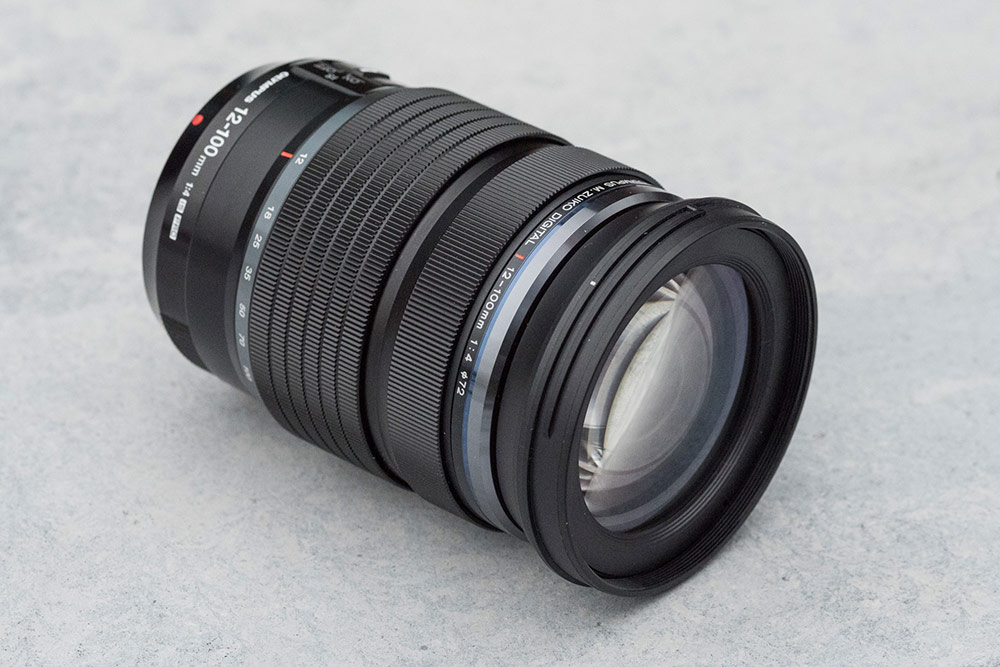
Amateur Photographer verdict
Quite simply, this lens brings an unparalleled combination of high image quality, compositional versatility, robust construction and near-magical image stabilisation.- High quality throughout zoom range
- Excellent stabilisation system
- f/4 max aperture
At a glance:
- Filter thread: 72mm
- Minimum focus distance: 0.15m
- Weight: 561g
- Price: $1,200 / £1,199
A five-star superzoom? You’d better believe it – the Olympus M.Zuiko Digital ED 12-100mm f/4 IS Pro is a belter of a lens. With an equivalent range of 24-200mm, it truly covers the gamut between wide and telephoto focal lengths, and manages to do so without the compromise in image quality that normally comes with such a broad zoom range. What really sets it apart though is the image stabilisation – we managed to use it with shutter speeds as slow as four seconds and we still got usable results.
All this makes the M.Zuiko Digital ED 12-100mm f/4 IS Pro pretty much unparalleled in terms of shooting flexibility. It’s able to handle all manner of compositions and lighting conditions, and do so extremely well. The only real sticking point is the cost; many photographers might balk at paying four figures for a superzoom. Understandable – but they’re missing out on a truly special lens.
Best for: all-in-one super zoom
Read our Olympus M.Zuiko Digital ED 12-100mm f/4 IS PRO review
4.5-star rated lenses:
Best standard prime
Panasonic Lumix G 20mm f1.7 II ASPH

Amateur Photographer verdict
The Panasonic Lumix G 20mm f/1.7 II Asph. give you a more compact camera system, but it also opens up additional low-light performance- Feather-light, metallic build
- Opens up to f/1.7
- Impressive quality even wide open
- Focus is slow
- No optical stabilisation
At a glance:
- Filter thread: 46mm
- Minimum focus distance: 0.2m
- Weight: 87g
- Price: $268 / £279
This entry in the feather-weight category of Micro Four Thirds lenses has been around a good while, but we re-tested it recently to see how it holds up and found ourselves summarily impressed. The Panasonic Lumix G 20mm f1.7 II, which somehow weighs about the same as a couple of boxes of matches, is a crisp, fast and punchy lens that makes for an excellent day-to-day shooter. Its equivalent focal length of 40mm makes it a natural choice for general, all-purpose photography, providing a similarly naturalistic perspective to a nifty-fifty but getting that little bit more of the scene in the frame.
Autofocus is certainly not the fastest, no matter whether you use a Panasonic or Olympus camera. The mechanism is also audible, and the front of the lens moves noticeably when hunting – and it will hunt. However, the real test of a lens is of course the image quality, and for a lens this small and this affordable, the Panasonic Lumix G 20mm f1.7 II ASPH really stacks up. We found sharpness to be excellent, with the lens capable of producing crisp and detailed images even at its generous maximum aperture of f/1.7.
Best for: General-purpose and travel photography
Read our Panasonic Lumix G 20mm f1.7 II ASPH review.
Best ultra-wide prime
Panasonic Leica DG Summilux 9mm f/1.7 ASPH
Amateur Photographer verdict
This 9mm lens is a great addition to the kit bag of any Micro Four Thirds photographer, especially if you’re somebody with a penchant for landscapes, cityscapes, architecture, and more.- Near-unique in MFT system
- Very small and light
- AF is quiet and fast
- No aperture ring
At a glance:
- Filter thread: 55mm
- Minimum focus distance: 0.095m
- Weight: 130g
- Price: $448 / £440
This wide-angle prime, a recent effort from Panasonic, is a solid addition to the kit bag of any landscape photographer using Micro Four Thirds. It impressed across the board in our testing, delivering sharp results in most shooting scenarios that we subjected it to. It’s also worth noting that this is an autofocus lens, which somewhat sets it apart in the MFT system – generally, for something this wide (18mm equivalent), your options are manual focus only.
The Panasonic Leica DG Summilux 9mm f/1.7 ASPH. is a unique lens that plugs a genuine gap in the MFT system, and its excellent across-the-board sharpness is a winner. Distortion is kept to a minimum, and it’s only once you stop down to around f/16 that you start to see pronounced softness – and for a lens this light and this well-priced, something had to give. This is an ideal walk-around lens for the Micro Four Thirds user.
Best for: Landscapes and ultra-wide street shooting
Read our Panasonic Leica DG Summilux 9mm f/1.7 ASPH review
Best OM-System prime
OM-System M.Zuiko Digital ED 20mm f/1.4 PRO

Amateur Photographer verdict
The OM 20mm f/1.4 counts as a welcome addition to the range and a fine general-purpose lens, especially for low-light shooting.- Portable for an f/1.4 lens
- Smooth, attractive out-of-focus blur
- Quick, quiet autofocus
- No focus clutch mechanism
At a glance:
- Filter thread: 58mm
- Minimum focus distance: 0.25m
- Weight: 247g
- Price: $800 / £649
The first lens from OM Digital Solutions, the OM System M.Zuiko Digital ED 20mm f/1.4 PRO lens lives up to the PRO name and like other Olympus M.Zuiko lenses, delivers excellent optical performance. Andy Westlake reviews the lens, and finds that it gives a great balance between size and weight, whilst offering a bright f/1.4 aperture. It’s also a more affordable option when compared to the f/1.2 lenses available.
We’d been wanting to see a lens like this for Micro Four Thirds for some time – something fast but light, not weighed down by the kind of optical construction required for f/1.2. The OM-System M.Zuiko Digital ED 20mm f/1.4 PRO is a delight of a lens, a fast standard prime at the underrated 40mm equivalent focal length.
Best for: high-image quality, and 40mm view
Read our OM System M.Zuiko Digital ED 20mm f/1.4 PRO Review
Best Micro Four Thirds lens for astrophotography: Olympus M.Zuiko Digital ED 7-14mm f/2.8 PRO
Amateur Photographer verdict
The Olympus M.Zuiko Digital ED 7-14mm f/2.8 PRO showed itself to be a highly capable lens, both on the test bench and in real world situations.- Excellent handling
- Compact build
- Some corner softness at wide angles
At a glance:
- Filter thread: n/a
- Minimum focus distance: 0.2m
- Weight: 534g
- Price: $1,200 / £1,249
Micro Four Thirds is often readily dismissed in conversations about astrophotography, mainly due to the smaller sensor size of the cameras. However, the system has a lot going for it when it comes to shooting the night sky. Newer Olympus and OM-System cameras, in particular, feature ‘Starry Sky AF’, an innovative system designed to help achieve pin-point focusing accuracy on distant stars.
For capture of astro images, you ideally want a wide-angle lens to fit in plenty of the night sky. A nice wide maximum aperture is ideal for letting in as much light as possible, and weather-sealing is a plus since you’re going to spend cold, damp nights outdoors. A Micro Four Thirds lens that ticks all these boxes is the superb Olympus M.Zuiko Digital ED 7-14mm f/2.8 PRO zoom. With an equivalent focal length of 14-28mm, it’s wide enough for expansive night-time vistas.
Also, as we found in our review, sharpness is excellent for a wide-angle – a little soft in the corners as is usual for a lens in this type, but not enough to seriously compromise images. Sharpness in the centre is absolutely top-notch. The lens is also sealed in eleven places, meaning you’ll have nothing to worry about from that late-night dew fall as you capture your astro images.
Best for: astrophotography, landscapes
Read the Olympus M.Zuiko Digital ED 7-14mm f/2.8 PRO review
Best compact telephoto zoom
OM System M.Zuiko Digital ED 40-150mm F4.0 PRO
Amateur Photographer verdict
The OM System M.Zuiko Digital ED 40-150mm f/4 PRO delivers nicely on its promise by producing lovely crisp images from a small, lightweight package.- IP53-rated weather-sealing
- Excellent optical quality
- Super-fast autofocus
- Lacking some physical controls
- Background blur can be messy
At a glance:
- Filter thread: 62mm
- Minimum focus distance: 0.7m
- Weight: 382g
- Price: $700 / £749
Announced alongside the flagship OM-1 camera, the M.Zuiko Digital ED 40-150mm F4.0 PRO is its second all-new optic under the OM System brand, after the M.Zuiko Digital ED 20mm F1.4 PRO. It’s a compact, weather-sealed telephoto zoom than employs a space-saving retractable design and promises premium optics. With a zoom range equivalent to 80-300mm on full-frame, it’s designed for use with Olympus and OM System cameras but can also be used on Panasonic Lumix G-series MFT bodies.
Of course, anyone can make claims about a lens’s image quality – but how does this zoom stack up in the real world? Well, we tested it out and found that sharpness-wise, it’s pretty hard to fault the OM System M.Zuiko Digital ED 40-150mm F4.0 PRO. There’s loads of detail from corner to corner, even at the widest aperture setting. With f/4 you won’t get the kind of clean and attractive background you get from faster lenses, but as long as you’re aware of this limitation, the M.Zuiko Digital ED 40-150mm F4.0 PRO is a super lens.
Best for: Telephoto zoom, in a compact lens
Read the OM System M.Zuiko Digital ED 40-150mm F4.0 PRO review
Best Sigma portrait lens
Sigma 56mm f/1.4 DC DN
Amateur Photographer verdict
With the 56mm f/1.4 DC DN C, Sigma has produced a very appealing compact prime lens for users of a host of camera brands- Excellent value for money
- Solid construction
- Good physical size for MFT
- No AF/MF switch
At a glance:
- Filter thread: 55mm
- Minimum focus distance: 0.5m
- Weight: 280g
- Price: $519 / £749
The Sigma 56mm f/1.4 DC DN is part of a range of compact prime lenses designed for APS-C and Micro Four Thirds mirrorless cameras. With a bright f/1.4 aperture, this is a great portrait lens, giving a 112mm equivalent on Micro Four Thirds cameras. It’s also relatively compact, and would make a great choice for anyone needing to shoot in low-light conditions, or for portrait photography.
In our review, we especially appreciated how the smaller size of this prime lens means it’s doesn’t dwarf or overbalance even the smaller mirrorless cameras. Also, the sheer value for money here is really quite impressive – getting an effective little telephoto prime for an MFT camera at this price really can’t be sniffed at, especially with that aforementioned generous maximum aperture.
Best for: longer telephoto portraits with pleasing bokeh
Read the Sigma 56mm f/1.4 DC DN review
Best premium wide-angle lens
Panasonic Leica DG Summilux 12mm f/1.4 ASPH
Amateur Photographer verdict
The Panasonic Leica DG Summilux 12mm f/1.4 Asph is a fine lens that’s not going to disappoint, but it comes at a price- Great for low light
- Splashproof construction
- Quite expensive
- Aperture ring won’t work with Olympus
At a glance:
- Filter thread: 62mm
- Minimum focus distance: 0.2m
- Weight: 335g
- Price: $1,198 / £1,099
The Leica DG Summilux 12mm f/1.4 ASPH lens is a premium lens with the Leica branding, and the wide-angle lens gives a 24mm equivalent. You’ll find an aperture ring on the lens, and can also control the aperture with the camera. There’s also a solid build quality, thanks to a metal construction, and you’ll benefit from weather-sealing. Perhaps more importantly, the lens also delivers excellent image quality, with plenty of fine detail, even when shooting wide-open.
We really rated this as a landscape lens when we came to review it, especially given that robustly weatherproof construction that keeps the rain out. It’s also a solid do-it-all documentary lens, with fast and silent autofocus that can be relied upon to nail the shot in varying conditions. We weren’t huge fans of either the manual focusing ring or the aperture ring, the former being too slippery, the latter being incompatible with Olympus. A pity that the high price tag of this lens probably precludes it for MFT shooters who aren’t using Panasonic.
Best for: shooting wide-open landscapes with high image quality
Read the Leica DG Summilux 12mm f/1.4 ASPH review
Best budget portrait lens: Panasonic Lumix G 25mm f/1.7 ASPH.
Amateur Photographer verdict
The Panasonic Lumix G 25mm f/1.7 Asph is amazing value for money.- Super-affordable
- Useful standard focal length
- Lots of credible alternatives
At a glance:
- Filter thread: 46mm
- Minimum focus distance: 0.25m
- Weight: 125g
- Price: $248 / £149
The Panasonic Lumix G 25mm f/1.7 ASPH lens is an entry-level, and very affordable bright prime lens. Since it gives a 50mm equivalent field of view, you can think of this lens as the “Nifty Fifty” to get for your Micro Four Thirds camera. Being roughly half the price of an Olympus 25mm f/1.8 lens, this Panasonic lens is hard to beat.
We were very impressed with the lens in our review – once again, Panasonic shows an ability to listen to its community and produces a genuinely useful and affordable lens. The Lumix G 25mm f/1.7 ASPH handles well, focuses fast and delivers decent sharpness. For the price, it’s an absolute bargain.
Best for: great value, portraits, compact lens
Read the Panasonic Lumix G 25mm f/1.7 ASPH review
Best compact wide-angle prime: Laowa 10mm f/2 Zero-D MFT
Amateur Photographer verdict
With its tiny size and sharp optics, the Laowa MFT 10mm f/2 is a classic example of what Micro Four Thirds does best.- Small, super lightweight
- Good sharpness at narrow apertures
- Vignetting at f/2
- No autofocus
At a glance:
- Filter thread: 46mm
- Minimum focus distance: 0.12m
- Weight: 125g
- Price: $349 / £519
This manual focus Micro Four Thirds lens offers a 20mm equivalent angle of view, and is just 125g in weight. Being only 41mm long, it’s a tiny little lens that will suit those people looking for a compact, portable lens. This lens may be manual focus, but it has electronic contacts, and the aperture is controlled by the camera.
The Laowa 10mm f/2 Zero-D MFT has been designed to give minimal distortion, and our testing bore this out, with the lens producing very impressive results indeed, especially once stopped down a few clicks. For those looking for a wide-angle lens, this is a great choice, scoring 4.5 stars in our review.
Best for: wide-angle shooting with manual focus
Read our Laowa 10mm f/2 Zero-D MFT review.
4-star rated lenses:
Sigma 30mm f/1.4 DC DN
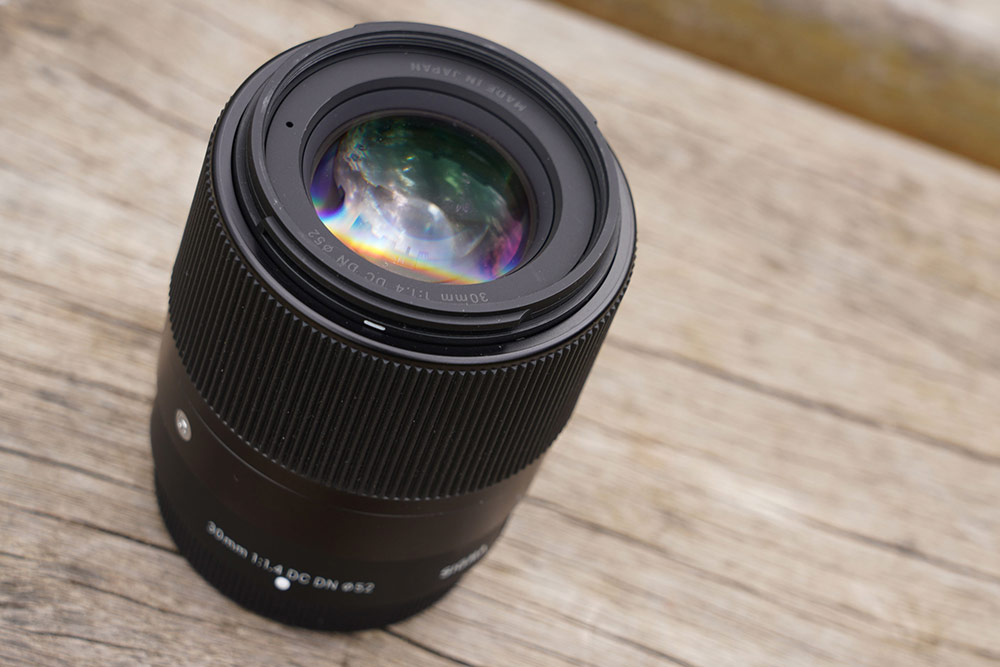
Amateur Photographer verdict
With its reasonable size and weight, large f/1.4 aperture, superior build quality and a good price, the Sigma 30mm f/1.4 DC DN C is worthy of serious consideration- Edge-to-edge sharpness
- Useful optical coatings
- Performs great wide-open
- Focus is quiet, not silent
At a glance:
- Filter thread: 52mm
- Minimum focus distance: 0.3m
- Weight: 265g
- Price: $364 / £319
The Sigma 30mm f/1.4 DC DN is part of a range of bright f/1.4 lenses designed for APS-C and Micro Four Thirds mirrorless cameras, along with the 56mm f/1.4, there’s also a 16mm f/1.4 lens available. The Sigma 30mm f/1.4 gives a 60mm equivalent field of view, making it slightly longer than the “standard” 50mm lens. With an f/1.4 aperture, it’s also a good choice if you need to shoot in low-light conditions.
Just like Sigma’s other f/1.4 mirrorless primes, this lens delivers great quality for an impressively reasonable price. In our testing, we found that it produced sharp-enough images at f/1.4, and sharpness just got better and better as we stopped down. In fact, we recommended that Micro Four Thirds users especially should strongly consider adding it to their kit bags, as the smaller sensor means you’ll see much less vignetting than the APS-C crowd.
Best for: low-light and portraits
Read the Sigma 30mm f/1.4 DC DN review
Laowa 7.5mm f/2 MFT

Amateur Photographer verdict
Ultra wideangle primes are not everyone’s cup of tea but if you enjoy dramatic lines and intimate compositions this focal length will be right up your street- Excellent centre sharpness
- Small, lightweight
- No autofocus
- Not weatherproof
At a glance:
- Filter thread: 46mm
- Minimum focus distance: 0.12m
- Weight: 170g
- Price: $389 / £429
The Laowa 7.5mm f/2 MFT is a manual focus lens with direct aperture control, with no electrical contact to the camera. The lens is available in silver or black, and gives an ultra-wide 15mm equivalent. Being made for Micro Four Thirds only, it’s extremely compact, and lightweight making it easy to take with you wherever you go.
Aesthetically, this lens pairs like a dream with retro-styled Olympus and OM System cameras (one of which we picked as one of the best retro-styled cameras). While style points may or may not matter to you, one thing that every photographer should take note of is the top-notch sharpness, particularly in the centre. For a tactile, throwback shooting experience, with aperture and focus controlled by rings on the barrel, the lens is a dream. We had a great time shooting with it.
Best for: ultra-wide view and manual focus
Read the Laowa 7.5mm f/2 MFT review
Olympus M.Zuiko Digital ED 8mm f/1.8 Fisheye PRO
Amateur Photographer verdict
Those photographers who can make use of it are unlikely to feel let down by its performance.- Robust and splashproof
- Fast, silent autofocus
- Generally good optical quality
- Expensive for a fisheye
- On the bulky side
At a glance:
- Filter thread: n/a
- Minimum focus distance: 0.12m
- Weight: 315g
- Price: $1,100 / £899
If you’re looking for a fisheye lens, then the Olympus M.Zuiko Digital ED 8mm f/1.8 PRO is one such, with autofocus (AF) and weather sealing. It’s got a fast maximum aperture, making it suitable for low-light use, and delivers impressive image quality. In our review, we got consistently excellent results. The best were obtained by processing out some lateral chromatic aberration, though this is to be expected from wide-angle lenses of this type. It also served to remove unsightly colour fringing, and improve apparent edge sharpness.
This is something of a niche lens – do many shooters need a weather-sealed fisheye? Not many. But if this is your niche, you’re in for a treat.
Best for: fisheye, creative landscapes / architecture
Read the Olympus M.Zuiko Digital ED 8mm f/1.8 Fisheye PRO review
OM System M.Zuiko Digital ED 100-400mm f/5-6.3 IS
Amateur Photographer verdict
The M.Zuiko Digital ED 100-400mm f/5-6.3 can produce really attractive results, especially in bright sunlight.- Excellent sharpness
- Close focusing distance
- Robust and weather-sealed
- Somewhat bulky
- f/5-6.3 is restricting
At a glance:
- Filter thread: 72mm
- Minimum focus distance: 1.3m
- Weight: 1120g
- Price: $1,000 / £1,299
The OM System M.Zuiko Digital ED 100-400mm f/5-6.3 IS lens is a mid-range telephoto zoom that gives a 200-800mm equivalent, although with a relatively slow aperture, you do need bright sunny conditions to get the best out of the lens and camera. It’s also compatible with the Olympus MC-14 (1.4x) and MC-20 (2.0x) teleconverters if you want even more reach.
We were ultimately a little hesitant on this lens in our review. It’s undoubtedly good, the way pretty much all lenses from the major manufacturers can be described as “good”. However, it’s oddly heavy for an Olympus / OM System lens, and the two-thirds stop aperture disadvantage at 100mm can really get in the way when light levels start to drop. Still, it’s a lens that can produce gorgeous results in the right conditions.
Best for: impressive telephoto reach
Read the OM System M.Zuiko Digital ED 100-400mm f/5-6.3 IS review
Panasonic Lumix G Vario 12-60mm f/3.5-5.6 ASPH Power OIS
Amateur Photographer verdict
The 12-60mm f/3.5-5.6 can be recommended if you want a capable all-round standard zoom without breaking the bank.- Very portable
- Silent autofocus and aperture mechanisms
- 25cm close focusing distance
- Image quality more good than great
At a glance:
- Filter thread: 58mm
- Minimum focus distance: 0.25m
- Weight: 210g
- Price: $498 / £349
The 12-60mm lens gives a useful zoom range from 24-120mm equivalent, with optical image stabilisation, and a more affordable price tag compared to some lenses. Focus is snappy, and image quality is respectable, making it a great upgrade option for those with a 14-42mm kit lens.
Having spent some time with this lens for our review, we feel it is a useful option for Olympus / OM System users as well as Panasonic. In practice, MFT users tend to stick in their lane more than the marketing material likes to make out, but the weather-sealed build and fast aperture of this lens make it a great pairing with cameras from the other side of the system.
Best for: all-in-one zoom with good value for money
Read the Panasonic Lumix G Vario 12-60mm f/3.5-5.6 ASPH Power OIS review
Olympus M.Zuiko Digital ED 12-200mm f/3.5-6.3
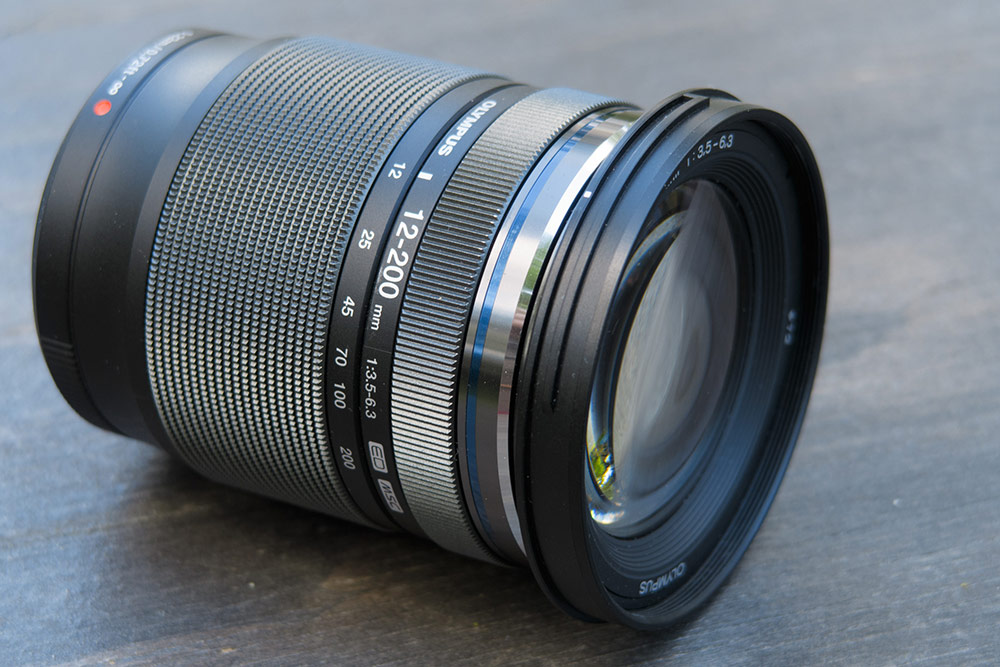
Amateur Photographer verdict
In use, its very wide focal length range, impressive close focus and weather-resistant construction, mean that this lens can tackle a wide range of subjects- Huge zoom range
- Weather-resistant
- Good close-focusing distance
- Middling sharpness
- Autofocus struggles in low light
At a glance:
- Filter thread: 72mm
- Minimum focus distance: 0.22m
- Weight: 455g
- Price: $1,000 / £879
The Olympus M.Zuiko Digital ED 12-200mm f/3.5-6.3 all-in-one “super zoom” lens offers a somewhat incredible 24-400mm equivalent zoom range. The lens benefits from a weather-resistant construction, but due to the lack of optical image stabilisation, it’s not recommended for use on cameras that don’t feature in-body image stabilisation (IBIS), as it could be tricky to get sharp shots when using more of the telephoto zoom.
As we noted in our review, it’s also not as sharp as other lenses, particularly at the telephoto end of the lens. This is often the case with super zoom lenses. We found it highly enjoyable to use, even if it did struggle noticeably in low light.
Best for: all-in-one super zoom with plenty of reach
Read the Olympus M.Zuiko Digital ED 12-200mm f/3.5-6.3 review
More Micro Four Thirds lenses to consider:
Whilst we haven’t rated these lenses, we have given them a thorough test, and you can find out what we think of them. Sample photos from them are shown to help to inform your choice.
Olympus M.Zuiko Digital ED 150-400mm f/4.5 TC1.25x IS PRO
Amateur Photographer verdict
The Olympus M.Zuiko Digital ED 150-400mm f/4.5 TC1.25x IS PRO is an amazing wildlife lens that takes the 1.4x and 2x teleconverters, and is both compact and lightweight.- Useful built-in 1.25x converter
- Versatile zoom range
- Weather sealed
- Very pricey
- Bird AF slower than rivals
At a glance:
- Filter thread: 95mm
- Minimum focus distance: 1.3m
- Weight: 1,875g
- Price: $7,500 / £6,695
For the professional sports or wildlife photographer, this lens offers a 300-800mm equivalent range, which can be extended to 375-1000mm (at f/5.6) using the built-in 1.25x teleconverter! When used with the Olympus OM-D E-M1X it’s also said to be able to give up to 8 stops of image stabilisation! It’s also considerably lighter than full-frame equivalents. For even more reach, it’s compatible with the Olympus MC-14 (1.4x) and MC-20 (2.0x) teleconverters.
We put this lens in the hands of professional photographer Andrew Fusek Peters for a full field test, and he came away very impressed indeed. Sharpness remained consistently good throughout the zoom range, and when light levels were just so, the images the lens produced were nothing short of sublime.
Best for: professional quality telephoto zoom with maximum reach
Read the Olympus M.Zuiko Digital ED 150-400mm f/4.5 TC 1.25x IS PRO review
Olympus M.Zuiko Digital ED 40-150mm f/2.8 PRO
Amateur Photographer verdict
At $1,300 / £1,000 the Olympus M.Zuiko Digital ED 40-150mm f/2.8 PRO is serious investment, but its bright aperture and very useful focal length range are excellent.- Broad, useful zoom range
- Smooth, satisfying handling
- Good detail resolving
- Built-in hood can interfere with zoom ring
At a glance:
- Filter thread: 72mm
- Minimum focus distance: 0.7m
- Weight: 760g
- Price: $1,300 / £1,000
The Olympus M.Zuiko Digital ED 40-150mm f/2.8 PRO lens is the go-to lens for those who want high-quality images, and a bright f/2.8 aperture throughout the zoom range. It’s well matched to the Olympus 12-40mm f/2.8 PRO lens, as the zoom range follows on from this, giving an 80-300mm equivalent zoom range. It’s also weather-sealed, and has an internal zoom mechanism so that the lens doesn’t change length when you zoom.
With a metal build and well-engineered handling, this is a pleasant lens to use. Time marches on, and with the OM System version out there for a cheaper asking price, there may not be much call for this zoom – but it’s an excellent optic in its own right.
Best for: telephoto zoom with bright aperture, ideal for sports
Read the Olympus M.Zuiko Digital ED 40-150mm f/2.8 PRO preview
How to choose the best Micro Four Thirds lens
Image Stabilisation – IS, Power OIS, or Mega OIS? If you’re using a Micro Four Thirds camera without In-Body Image Stabilisation (IBIS), then having optical image stabilisation in the lens is going to be of particular interest, it’s also worth looking out for it when looking at longer telephoto lenses. Panasonic lenses with optical image stabilisation come with “Power” or “Mega” OIS, whilst Olympus lenses with optical image stabilisation simply have “IS” in the name.
Manual focus or autofocus – The majority of Micro Four Thirds lenses are autofocus, but some, from companies like Laowa, Meike, and Samyang / Rokinon, are manual focus only. If manual focus isn’t for you, then make sure to check first.
Crop factor – The Micro Four Thirds system has a 2x crop factor, so that means a 50mm lens used on a Micro Four Thirds camera, will actually give a 2x cropped view, giving the equivalent to a 100mm lens (in 35mm equivalent terms).
Weather-sealing – If you’re likely to be shooting street or landscape photography and don’t want to stop due to poor weather conditions, then look out for a lens that is weather-sealed, as this will help protect your lens, as well as your camera.
Micro Four Thirds lenses: frequently asked questions
FAQ: Does Micro Four Thirds have a future?
Micro Four Thirds is the oldest mirrorless system, having been around for more than 15 years at this point. The original advantages of the system included the portable dimensions of its cameras and lenses. They stood in stark contrast to the DSLRs that were popular at the time – however, these days, with mirrorless systems in their ascendancy, the difference is less clear-cut. A full-frame Sony setup or an APS-C Fujifilm setup won’t be all that much bigger and heavier than a Micro Four Thirds setup using top-end Panasonic or OM-System kit.
There are certainly some who think the format’s day in the sun is coming to an end. Earlier this year, Sigma announced it would no longer be developing Micro Four Thirds lenses, stating that its future priority would be full-frame lenses.
However, rumours of the death of Micro Four Thirds are greatly exaggerated. The reinvention of Olympus as OM-System has breathed new life into the format, resulting in a raft of weather-proof cameras and lenses. Panasonic, meanwhile, still has a hugely popular video range in the form of its Lumix GH cameras, including the Panasonic Lumix GH6. More recently, the release of the Panasonic Lumix G9 II has confirmed that Panasonic is committed to the MFT system in the long-term.
Recent Micro Four Thirds releases have leant into computational features such as LiveND, hi-res multi-shot in-camera, focus stacking and live bulb / live composite modes. Also, while the weight advantage of the system isn’t what it once was, it’s still definitely a factor, and if you’re looking to build a lightweight travel-friendly setup with a camera and multiple lenses, Micro Four Thirds will give you something no other system can.
We can expect to see more Micro Four Thirds cameras and lenses in the future, including likely an OM-System OM-10. It’s safe to say the format has a future for now.
FAQ: Will Olympus Micro Four Thirds lenses fit Panasonic?
Yes, Olympus and OM-System Micro Four Thirds lenses will fit Panasonic Micro Four Thirds cameras, and perform with full functionality of electronic features such as autofocus. Stabilisation is a slightly more complex thing – generally if you want the most powerful stabilisation effect, it’s best to use cameras and lenses from the same brand as they are calibrated to work together. Otherwise, you can feel free to swap between makers at your discretion.
One important thing to note, though, is that only Panasonic Lumix G cameras and lenses are Micro Four Thirds-compatible. Panasonic has also introduced a full-frame range, the Lumix S series, and these cameras and lenses use the L-mount, which was jointly developed by Panasonic, Leica and Sigma. A completely different system, L-mount lenses will not work with Micro Four Thirds cameras, and vice versa. So when shopping for Panasonic Micro Four Thirds optics, double-check you’re getting a ‘G’ lens, not an ‘S’ lens.
FAQ: Which Micro Four Thirds lenses are weather-sealed?
This is something you have to check on a case-by-case basis, as it varies from lens to lens in the MFT system. That said, if you want a weather-sealed Micro Four Thirds lens then it’s worth looking at newer OM-System lenses, as these usually feature class-leading IP53 weather sealing. On Olympus-branded lenses, look for the ‘PRO’ designation, as this denotes the top-end lenses in the range, which are generally weather-sealed. Panasonic doesn’t have a letter designation for weather-sealed lenses, though as a rule of thumb, expensive lenses tend to be weather-sealed, while cheap ones tend not.
FAQ: What is the full-frame equivalent of Micro Four Thirds lenses?
The smaller sensor size of the Micro Four Thirds camera sensors incurs what’s called a crop factor. This refers to the ratio of the sensor size to a full-size full-frame sensor – a sensor with a smaller imaging area incurs a smaller field of view where the edges of the image appear to be chopped off, or cropped. In turn, this causes lenses to provide a narrower field of view than they otherwise would.
You work out a lens’ full-frame equivalent focal length by multiplying the crop factor by the actual focal length. With Micro Four Thirds, the crop factor is 2, so working it out is quite easy – simply double the stated focal length. A 35mm lens mounted to a Micro Four Thirds camera will provide an effective field of view of 35×2, which is 70mm.
While many photographers turn their noses up at small sensors, a significant crop factor like this can actually be a considerable advantage. It enables photographers to shoot at telephoto focal lengths while wielding much smaller lenses than they would be if they were working with a full-frame sensor. This can be a boon for disciplines like wildlife photography, where you need a significant amount of telephoto reach, but don’t necessarily want to be carrying a lot of heavy kit.
How we test lenses
We review lenses from the perspective of choosing one for its photography and video performance, so we test every lens for all aspects of image quality: sharpness, contrast, background blur and bokeh, as well as other image qualities pertinent to assessing a lens type. We look for optical flaws such as chromatic aberration and distortion. We test focus performance for both accuracy and speed (in different lighting conditions), as well as how the lens delivers or renders images. This is tested in a range of shooting scenarios designed to expose lens characteristics, but we also examine how it performs in real world use in diverse shooting situations.
Beyond the pure optical performance of the lens, we assess the lens’ physical qualities, such as its design, build quality, ease of handling, and whether it offers any unique or interesting features worth mention. Beyond image quality certain lenses can be assessed for how they make you feel, or how they may affect a camera system set-up for portability, compactness, weight etc.
Text by Joshua Waller, with contributions from Jon Stapley.
More reading:
If you’re looking for more zoom lens options, then have a look at our round-up of the best zoom lenses for Micro Four Thirds, or have a look at our latest lens reviews.


